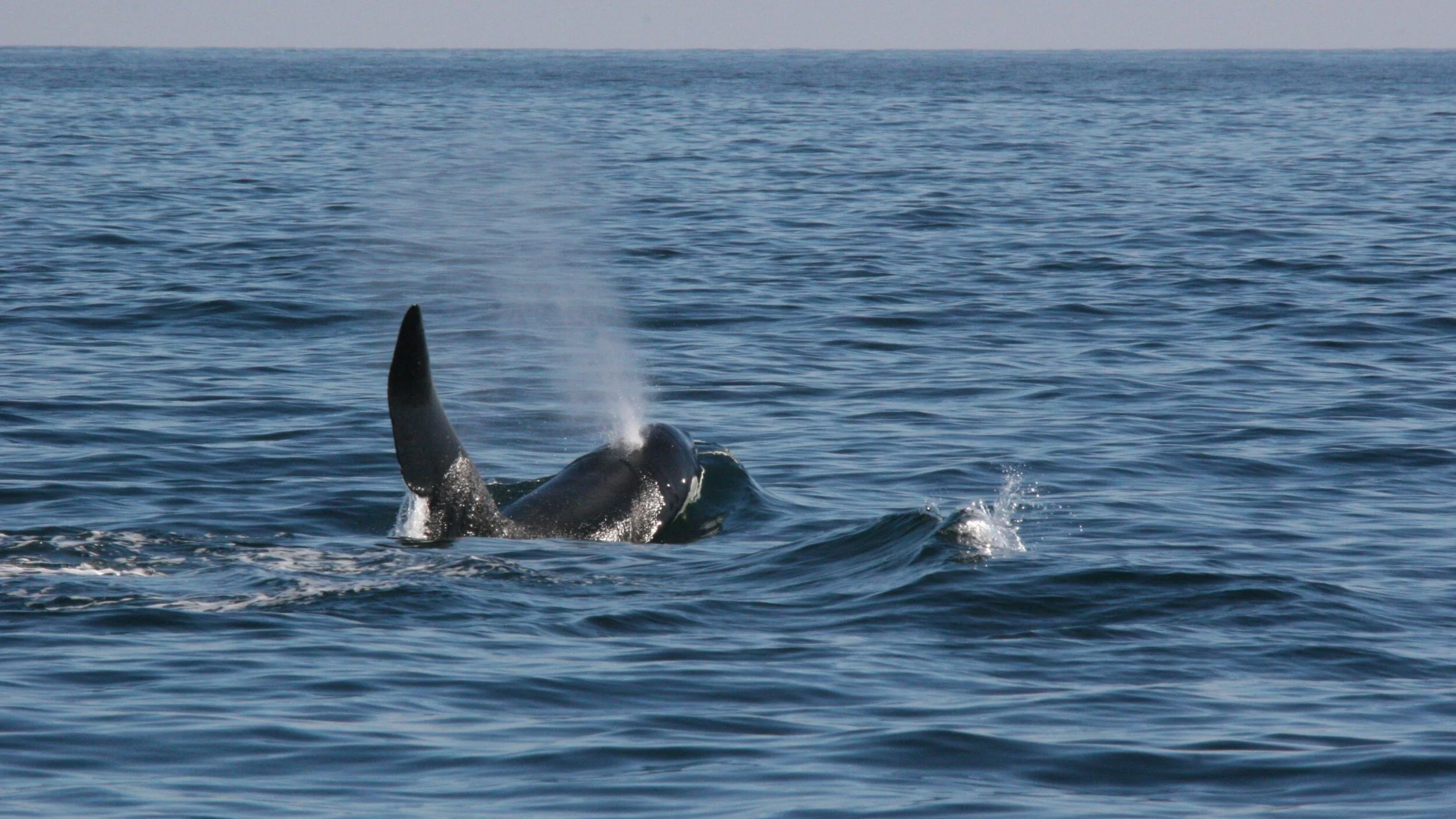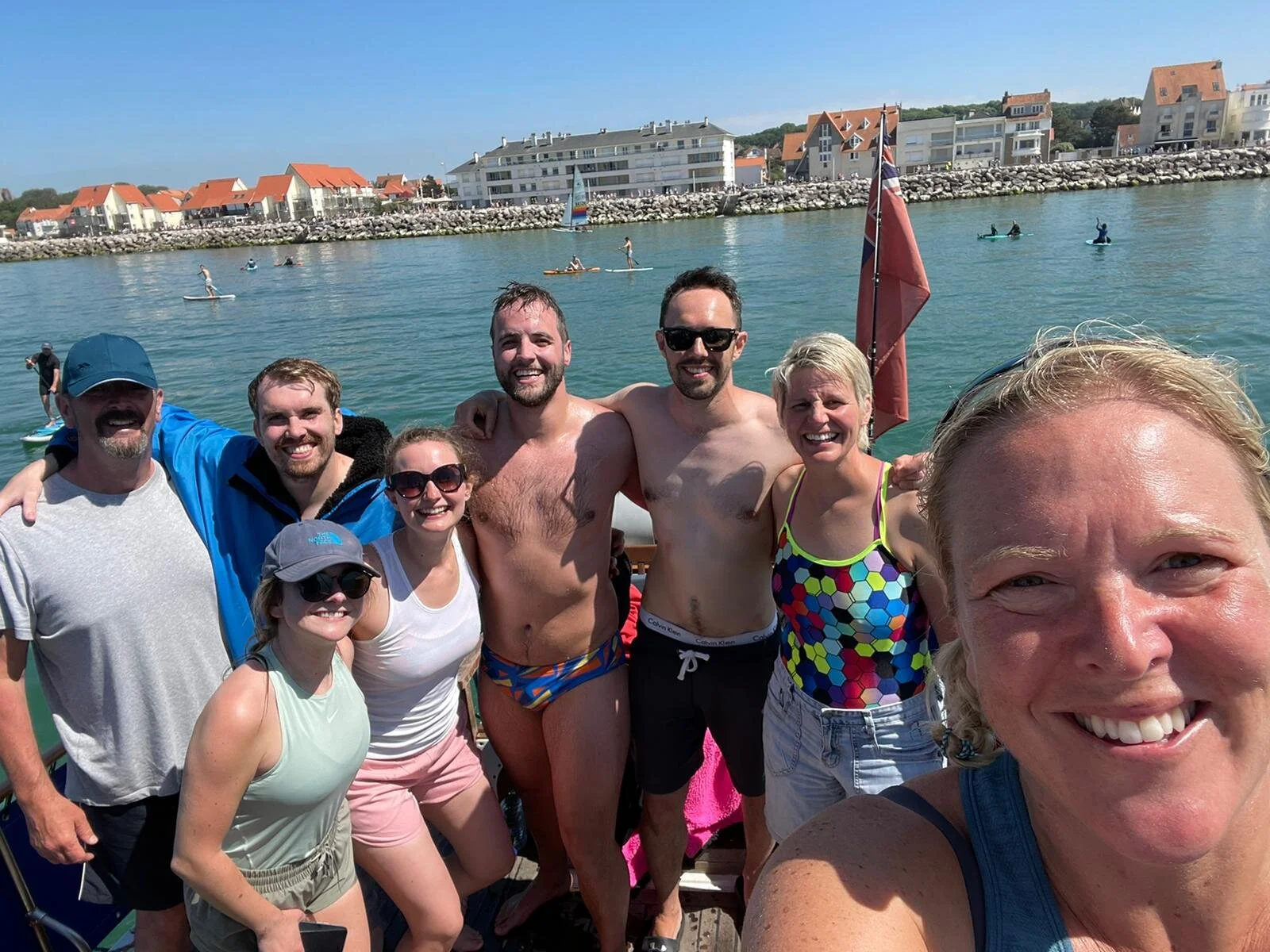Killer whale update: John Coe and pal are spotted in the English Channel again
John Coe, one of the most distinctive killer whales seen around the British Isles, photo © HWDT.org
News just in that John Coe from the West Coast Community has been filmed for the first time off Dover, in the English Channel. This is the furthest south-east that John Coe has ever been spotted, making this an important record for this well-known group of animals.
Yesterday, Nick Short and his friends were swimming the English Channel to raise money for The Children’s Air Ambulance – a national charity which operates a lifesaving transfer service for critically ill babies and children - when they spotted the distinctive fins of two killer whales.
At the time, one of Nick’s team was swimming in the water, completely unaware of their presence.
Nick shared this notable encounter with us and added:
“We were on our 6th one hour leg from leaving Dover. On our boat was a team of doctors, nurses and health care professionals raising money for the Children’s Air Ambulance.
Seeing the orca was incredible. It was at a particularly difficult and cold point, coming to the end of one of the legs. The swimmer in the water had no idea, she saw us pointing and filming from in the water but was entirely unaware of what was actually going on.
The orca passed in front about 100-200m ahead of us, going along the shipping lane, heading into the sunrise. It was such a surreal experience, making an amazing day that bit more special.” ”
Nick and the team onboard successfully managed their swim in 14:09:20, landing at Wissant, in France.
Once back on land, Nick shared his video on Instagram which clearly showed the distinctive notched fin of John Coe, from the unique group of killer whales known as the West Coast Community. John Coe was seen swimming with one other male, who is likely to be Aquarius.
The last confirmed sighting with photographs of these two was from the Hebridean Whale and Dolphin Trust’s research vessel, Silurian, on the 17th May off Lochboisdale, South Uist in the Outer Hebrides. Nick’s sighting between Dover and Calais also follows on from an earlier sighting in May 2021 when they were photographed off Cornwall for the first time.
“This is only the second confirmed sighting of John Coe off England in the five decades that this small and unique group of killer whales have been monitored. It really shows how much there is still to learn about the movements and behaviour of these animals.
Most of what we know about animals like John Coe and Aquarius is thanks to dedicated members of the public who send in their sightings, and this latest sighting really highlights how crucial this information is to improving our understanding of these animals. ”
Sightings of John Coe confirmed from good quality photographs reported to the Sea Watch Foundation, Hebridean Whale and Dolphin Trust, and Irish Whale and Dolphin Group, 1980-2021
This is also a great opportunity to raise awareness of the importance of not purposefully swimming with whales, or dolphins. These are wild animals and are therefore unpredictable. Swimming with these animals is not encouraged for the animals benefit; it increases the time they spend interacting with people and boats, which increases the risk of disturbance, collision, and may distract them from other important activities such as feeding and resting. If you do ever encounter a whale or dolphin when out swimming, it is encouraged that you slowly and calmly exit the water and enjoy the encounter from the shore or boat.
John Coe and Aquarius are part of a small and threatened community of killer whales that are expected to disappear in our lifetime. This latest sighting is in one of the busiest shipping areas in the world and therefore, we would like to put a call out to all boat users in the area to please keep an eye out for these special individuals, and to be respectful and keep your distance if you do see them. Best practice is to slow down to less than 6 knots when you see them, and not to directly approach. Please be especially careful if there are other boats around. Allow the animals to control the encounter (how close they get and how long they stay) and make sure there is clear space for them to move away and depart as they choose. More information on how to watch responsibly can be found here.
Nick and the team successfully completed their charity swim, arriving in Wissant, France, photo © Claire Westrope.
Thanks again to Nick and his friends for sending in their incredible and once in a lifetime sighting. It’s beautiful to see these two killer whales approach the boat on their own terms. Also, a huge congratulations to the teams that completed the relay swim. If you would like to learn more about the teams swim (Dr and the Medics Dolphins) and their fundraising efforts for the Children’s Air Ambulance, please visit their team fundraising page here and Nick’s fundraising page here.
Anyone can get involved to help track the movements of individuals like John Coe and Aquarius and contribute to marine conservation efforts by sending in sightings and photographs of whales, dolphins, porpoises and basking sharks. On the west coast of Scotland please contact the Hebridean Whale and Dolphin Trust and report on Whale Track: https://hwdt.org/whale-track or contact us on sightings@hwdt.org. All sightings and photos are valuable, we couldn’t study these incredible animals without you!
For Ireland please report to the Irish Whale and Dolphin Group (https://records.iwdg.ie/sighting.php) and report to Sea Watch Foundation (https://www.seawatchfoundation.org.uk/sightingsform/) for any areas around the British Isles.



